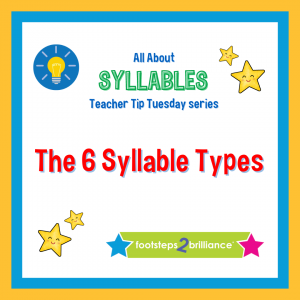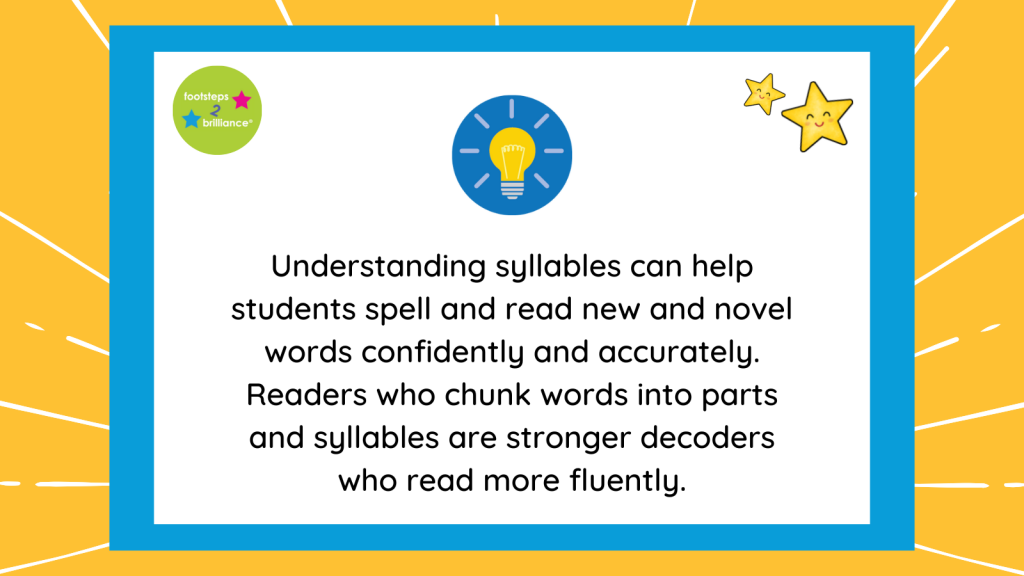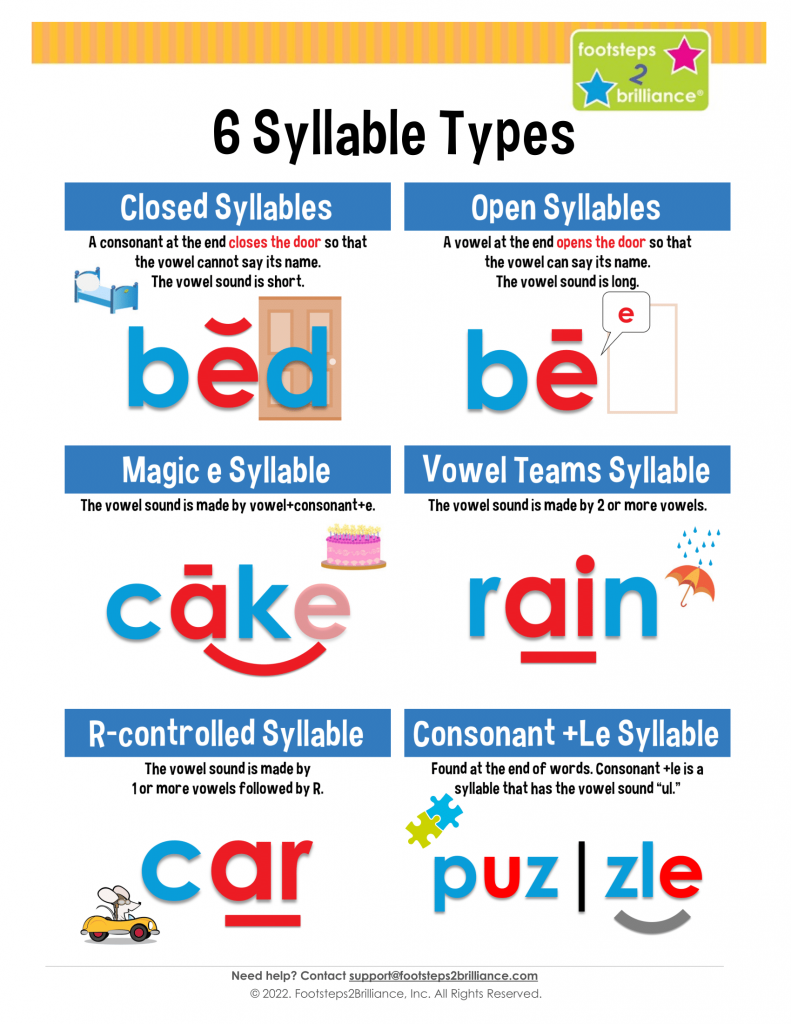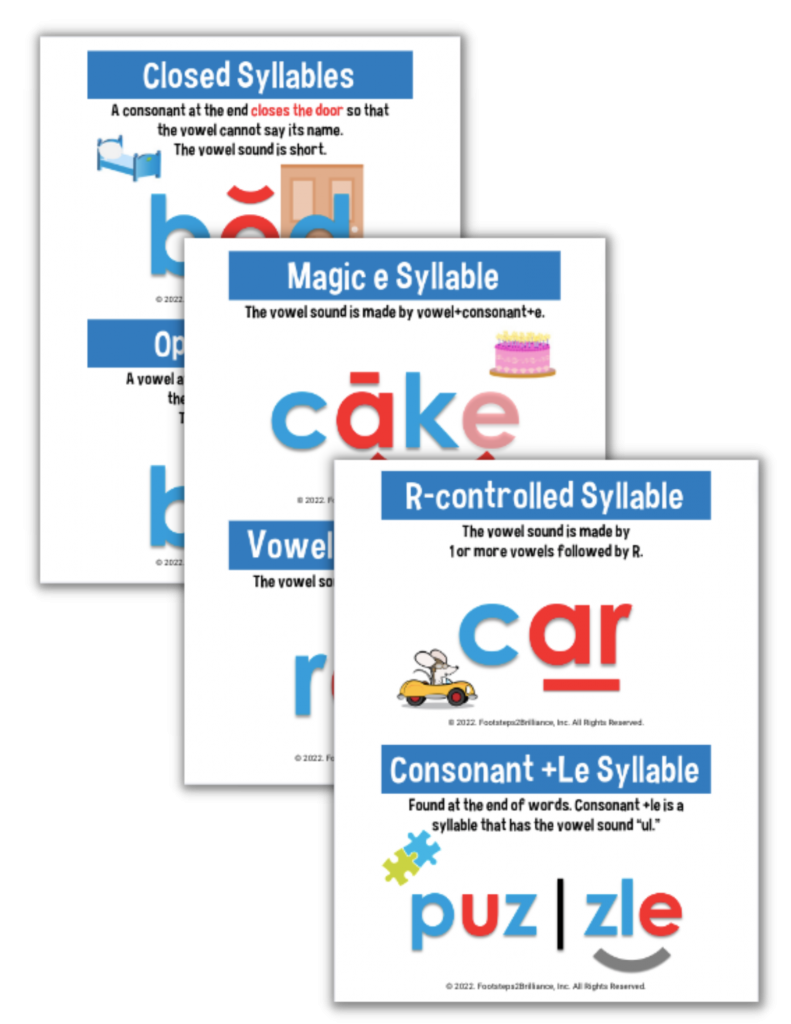What are syllables? In English, every word is comprised of at least one syllable, because every word has at least one vowel sound. The vowel sounds, and where they are located within the word, determine how many syllables the word has, and what type of syllables there are. There are six syllable types: closed, open, vowel consonant-e, vowel team, r-controlled, and consonant-le.
Learning to successfully identify and use the six syllable types will lead to better decoding outcomes for our students. With that in mind, Footsteps2Brilliance has introduced more games and pre-designed lessons for teaching syllables to our collection! Our new “All About Syllables Teacher Tip Tuesday” series will help teachers make the most of these comprehensive resources. Let’s do it!

Teaching syllables is about more than covering required curriculum.
Why teach syllables?

The 6 Syllable Types
Open and closed Syllables
Open syllables have a single vowel sound at the end, such as “be” or “no.”
Closed syllables have a consonant sound immediately following the vowel, such as “bit” in “rabbit.”


"Magic E" and Vowel Teams Syllables
Magic e syllables, or vowel + consonant-e syllables, have a silent e at the end, which makes the vowel sound long, as in “cake” and “bake.”
Vowel team syllables have two vowels that make one sound together, like in “rain” (the long a sound) and “boat” (the long o sound).
R-controlled and consonant-le syllables
R-controlled syllables have a vowel followed by an ‘r.’ The vowel sound is dependent on the ‘r’, such as “car” and “her.”
Consonant-le syllables end with a consonant + l and silent e. They always appear at the end of words, as in “puzzle” and “handle.” Since the e is silent, the only sound pronounced is the consonant + l. In linguistics, the vowel sound we hear is called a schwa.

While teaching syllables, having an anchor chart for students to refer to will help with retention
This can be done by adding each syllable type on chart paper as they are introduced. You can display them all at once across the top of a whiteboard, or even shrink them down to flip books that live in students’ desks. In your Footsteps2Brilliance teacher toolkit, you’ll find the printable version of the 6 syllable types for your anchor charts. You can also click here to download the file for printing.
Join us each week as we cover the scope and sequence for teaching syllables!
Looking for more Teacher Tip Tuesday content? Click here for the Effective Strategies for Teaching English Learners series, complete collection.
Not signed up? To learn how to provide your class with access to the Footsteps2Brilliance bilingual literacy program, click here, or sign up to speak to a Footsteps2Brilliance expert here.






